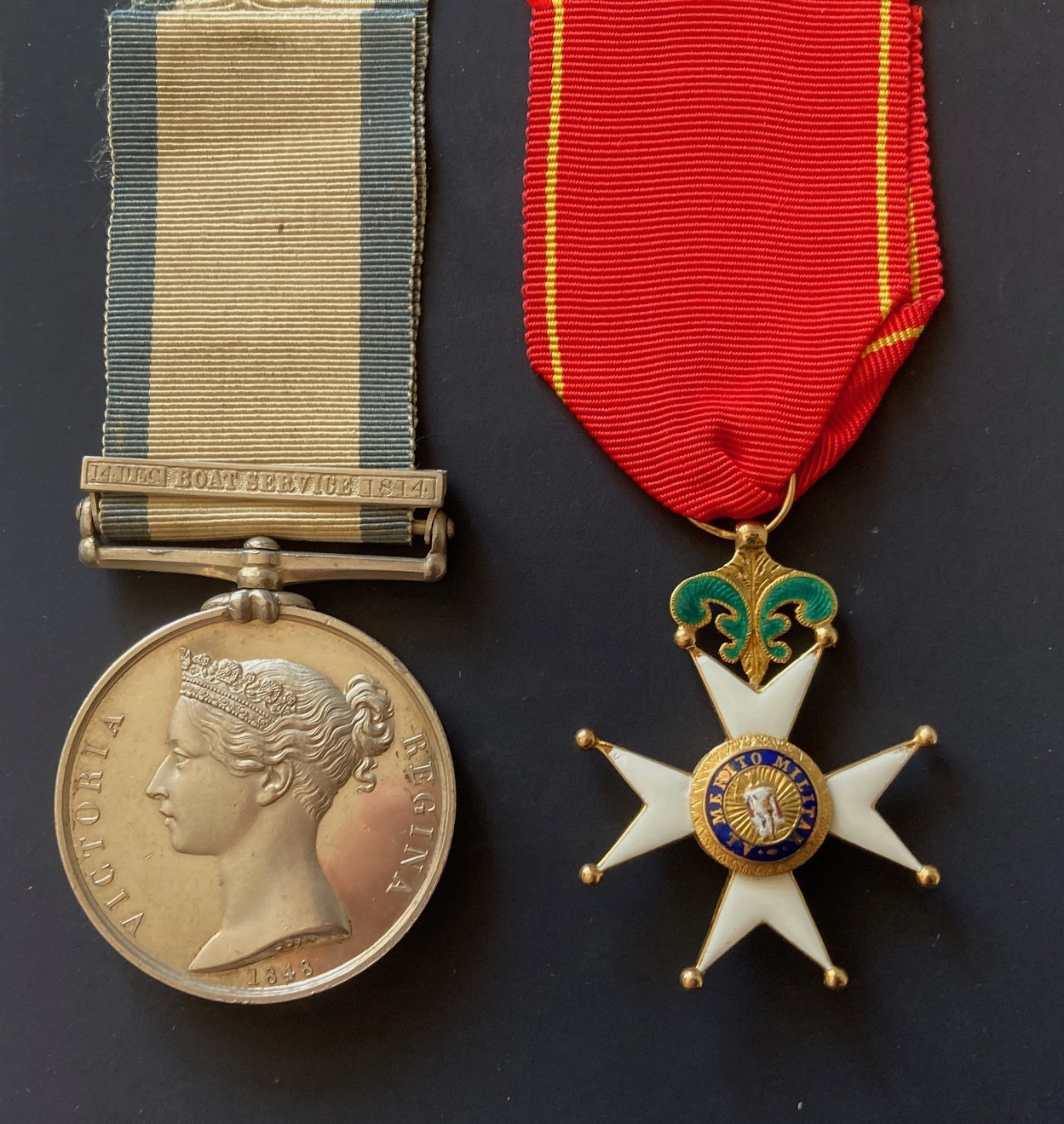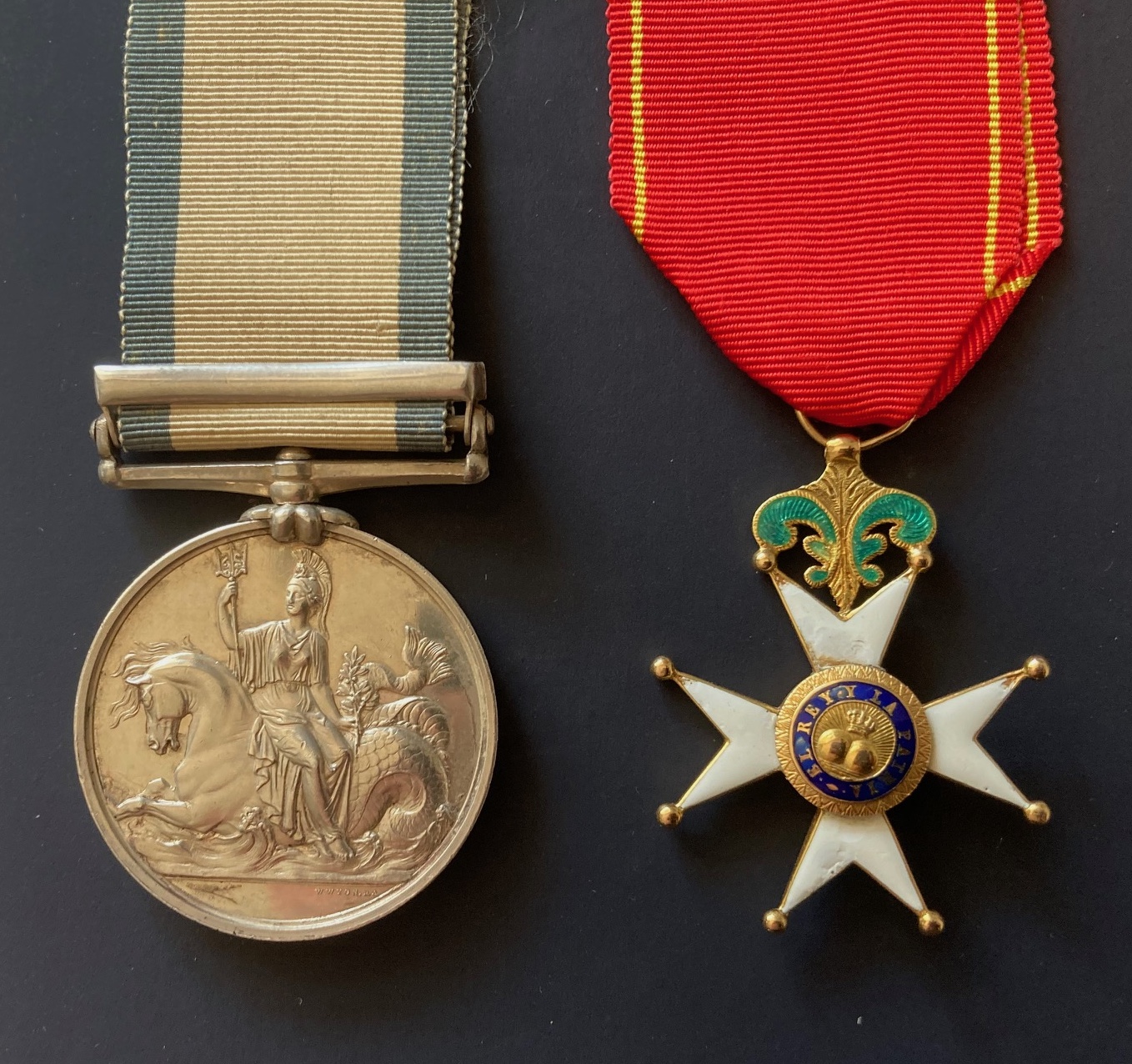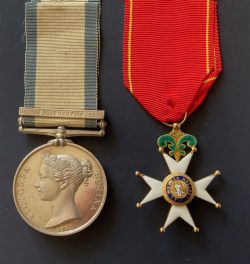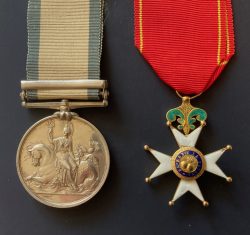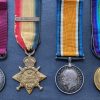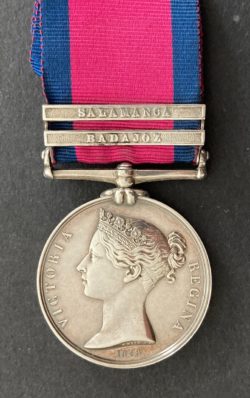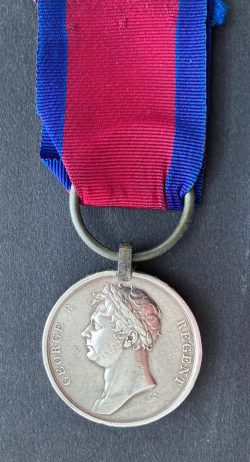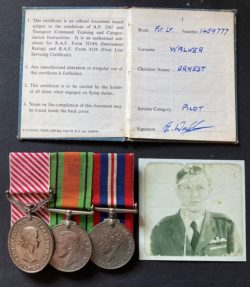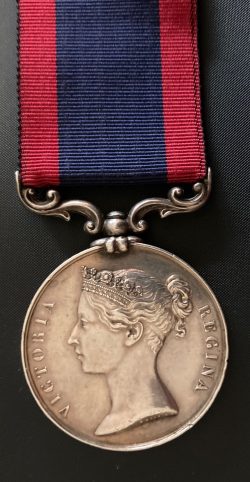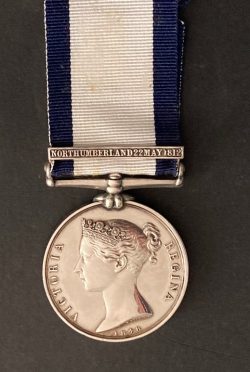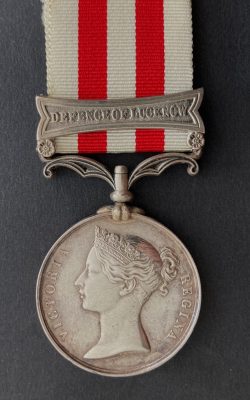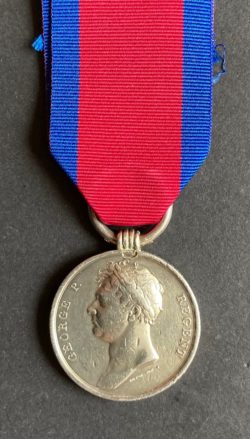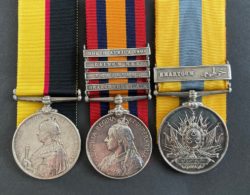A remarkable American Boat Service, clasp 14 December 1814, with 1st class Order of Ferdinand of Spain, Lieutenant , Royal Marines. Present In the boats in the attack on the American ships on Lake Borgne. One of the 100 Marine detachment at the battle of New Orleans and wounded in the head by a musket ball during the successful attack and the capture of the American guns on the West Bank of the Mississippi River, 8Jan. 1815. Shipwrecked off Campeachy , Gulf of Mexico, aboard HMS Tay in 1816 and taken prisoner by the Spanish Navy . Commanded a company of the Royal Marine battalion present during the Carlist War in 1836-1837 where the Marines were actively engaged especially at the battle of Hernani and awarded the order of Ferdinand
£11,000.00
Naval General Service, clasp 14 Dec Boat Service 1814 (Lieut. R.M.). 1st class Order of Ferdinand of Spain
Captain Charles Morgan
Commd. 2nd Lieut. 19805, Lieut. 1808, Present In the boats in the attack on the American ships on Lake Borgne being in the boat alongside Commander Montresor, commanding the second division of boats in the successful but bloody affair.
Present at the battle of New Orleans with the Royal Marine detachment of some 100 in strength (there were in addition some 100 R.M Artillery otherwise present). Together with a Naval detachment of some 100 men plus 3 companies of the 85th Foot were tasked with an attack on the guns on the west bank of the Mississippi. In perhaps the only success of the battle 17 American guns were taken at bayonet point. In this Lieutenant Morgan was wounded in the head by a musket ball.
‘Discovering American militia and artillery on the west bank of the Mississippi River, British General Pakenham ordered Lieutenant Colonel William B. Thornton to lead an attack force across the river. Thornton was to capture the American guns and turn them against Major General Andrew Jackson’s line here on the East Bank. The Americans under Brigadier General David B. Morgan made a stand, but they were routed, pursued, and their guns were taken. Fortunately for the Americans the British called off this engagement when they were defeated here on the East Bank. The American casualties numbered 49. This British reported losing 83 men. The British assault of January 8, 1815, proved to be the only British victory. Had the successes on the West Bank been exploited, the Battle of New Orleans might have ended in a British victory.’
Appointed to HMS tay in 1816 (18 gun sloop) , the ship was wrecked off Campeachy , Gulf of Mexico 11 November 1816, with some 2 million dollars in specie (coin). The Spanish corvette Valencey, Captain Varines, apparently sent to rescue the ship’s company, attacked the shipwrecked men seeking shelter on Crane’s Island, and stole the treasure being carried on board. Captain Roberts agreed to surrender under terms as prisoners of war despite a state of war not existing. (On 5 Oct 1818 The Spanish are reported to have returned the specie that they stole following the wreck of this ship.)
In 1836-1838 he commanded one of the seven companies of Royal Marines embarked to assist in the Carlist Wars. Whilst not formally at war they assisted in the support of the British Legion under de Lacy Evans. The marines were conspicuous in their steadfastness especially at the battle of Hernani (First Class Order of Ferdinand).
From Blumberg ‘History of the Royal Marines 1837-1914
‘It was then decided to attack the Carlists who were in position near the village. Of Hernani, 7 or 8 miles from San Sebastián. On 15th March 1837 , the RM Battalion advanced on the Hernani Road as far as the Windmill Battery in the Ayette Lines. The Carlists were strongly posted at the Vents of Oriamendi, and when at 2 pm the Marines advanced they came under artillery fire at about 8-00 yards, to which the guns of the RMA replied with considerable effect. The Christinos were making a flank attack round the Carlist right, and at 5 pm the Legion drove the Carlists from a line of heights which enabled the guns to be brought to close range of the Vents. At 7pm the Vents was stormed and its defenders took refuge in the town of Hernani. By 8 am on the 16th March the RM Battalion was in position on the Oriamendi plateau, about 1.5 miles from Hernani, covering the movement of the heavy artillery on the right of the Venta Hill; close here the RMA 24 pr howitzers were posted under Lieutenant Savage RMA.
The RM Battalion was with the 5th Division of the Legion; in their front were the 2nd Spanish LI and the 6th Regiment of the Legion in extended order. When the advance began fire was opened by three Carlist guns on the left of the town, to which the Heavy Artillery Battery replied. At 11 am the Carlist Lancers made a charge which was met by the Lancers of the Legion and over-thrown. Four Carlist Battalions then suddenly appeared on the
left from a gorge and drove back the skirmishers. Lieutenant Colonel Owen at once deployed 5 Companies of the Royal Marines under cover of a natural breastwork, and opened a heavy independent fire which checked and drove off the Carlists, whilst a flank attack on the right was defeated by the RM as also an attempt to get on to the San Sebastian road in their rear which was met by a company placed en echelon by Colonel Owen. The Carlists in front of the Marines fell back towards Hernani, but on the British left they continued to gain ground, so that the RM Battalion was ordered back to cover the San Sebastian road and eventually halted in column, where they had first come under fire on the day before – ie about 800 yards in rear of the Oriamendi Plateau. By 3.20 pm the Christinos and the Legion were falling back in such disorder that the Carlists were only checked by the Royal Marines deploying into line and showing such a threatening front that the Carlists ceased their pursuit, and the Christinos were able to gain the shelter of the fortifications at San Sebastian: the Battalion marched in that night and was quartered in the Church of St. Francis. The Spaniards and Legionaries had behaved so badly
that it was only the steadiness of the Royal Marines that saved the day from disaster.’
On 21st March, General Evans published the following order:
“The unshaken firmness of the British Royal Marines under Lieutenant Colonel Owen, in repulsing, as they did, four times their number, afforded you a noble example of the irresistible force of military organisation and discipline, which the Lieutenant General feels confident on future occasions you will be
proud to emulate.”
Morgan retired following his return from Spain. He died in 1849 shortly after receiving his medal.
Stunning Royal Marines officer’s award.
